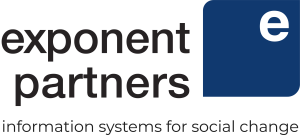6 Steps to a Successful Salesforce Implementation
So you work at a nonprofit and you’ve been using spreadsheets or an outdated system, and you’re ready to evolve with Salesforce. Where do you start? Chances are, if you’re reading this, you’ve begun that journey and are preparing to begin a project or have even already secured a shortlist of potential implementation partners. What sorts of questions should you ask? What steps can you take to move the project forward at this early stage? We’ve collected six steps below that may inform your next move or at least give you a clear idea of what to begin preparing as you work with an implementation partner towards project kickoff.
Clean and assess data
It is no secret that your data is your strongest asset. Without the data you’ve collected and analyzed and reported out, you’d be operating your organization without a view of where you’ve made impact and how you can create more. Just as you wouldn’t want a pilot flying blindfolded, you wouldn’t want to steer towards a system change without complete and accurate data.
Part of a thorough data assessment is attempting to understand what you could be doing to improve data collection and data integrity. Do you have a data governance plan in place? Are your users guided on data entry? Even if the answer is no to these questions now, a new implementation is the perfect opportunity to build best practices into your business processes to ensure integrity and accuracy in data collection and reporting.
A major component of any implementation is migration of data from System A to System B. Or in reality, you’re likely taking all data from System A, some data from System B, other data plus some duplicate data in System C, and transforming (not simply migrating) all this data into a unified dataset in System Z. And don’t forget the email marketing lists and legacy spreadsheets!
Establish success measures
When you begin an implementation project with a Salesforce partner, you should work towards KPIs that the project should be measured against. What outcomes will be considered a successful project? And how does timing play into that? Is this a multi-phased project? All of these questions should factor into your success measures. A good implementation partner will work with you to establish these goals and track progress towards them. Consider a successful implementation one in which your success measures are met, not simply a project where you “go live” on Salesforce and call it a day.
Evaluate your tech stack
Related to data assessment, evaluating your overall stack of solutions and applications and systems will go a long way towards sustainable and scalable success on the platform. Salesforce has the power to replace multiple disparate systems in many cases, and introduce more efficiency into day to day work by eliminating duplicate systems, streamlining data collection, and automating common processes. An effective implementation will take the total tech stack into consideration, and a good Salesforce implementation partner will encourage and help with this holistic evaluation prior to recommending a final solution. That is to say: you have to be honest about where you’ve been in order to get to where you want to go!
Map out business processes
Stop me if you’ve heard this one before: System A has limitations in how Process B is triggered, so to accommodate the limitations of the system you change your business process to match the cumbersome steps that System A has imposed on Process B. Sound familiar?
A successful Salesforce implementation considers more than just functionality and simple declarative requirements. The most successful projects have an element of business process analysis alongside the functional areas that make up the Salesforce platform, and it is often helpful to audit processes prior to determining future state. Rather than continuing to work for your system, Salesforce allows you to implement your system in a way that works for you and your business process. Take the extra step to audit your processes and evaluate them rather than simply reinventing your workarounds and manual steps. Don’t let your legacy systems keep you boxed in.
To admin or not to admin
So do I really need an admin to have Salesforce? The answer is it depends. For many organizations, simply having a Salesforce partner as a virtual admin or managed services extension of your team is enough. That said, a dedicated admin certainly creates numerous benefits for your user group, especially when augmented with consulting partner help and the larger Salesforce.org community of Trailblazers. While this question is worthy of a blog post on its own, it’s worth considering as you plan your Salesforce project. Whether you choose to hire a full time Salesforce administrator or not, it is always recommended to have some level of support and virtual admin services on hand to ensure success, maintain enthusiasm, perform system audits, and perhaps most importantly, foster user adoption.
Foster user adoption
Which brings us to the final and crucial step to implementation success: user adoption! Your system is only as good as the users that put in and report out data. You can automate a lot of processes, but there will always be a need for end users to be trained and supported. We’ve seen nonprofits develop some very creative programs to foster user adoption after a Phase 1 GoLive, such as incentives, competitions, working groups, etc. And the most successful organizations take this concept a step further and implement a Center of Excellence, a cross-functional user group advisory board whose charge is to continually improve and support the goals of the Salesforce implementation and user experience, post-GoLive and beyond.
Working through the steps outlined above can be painless with the right partner. Reach out to our team to learn more about how we support nonprofit organizations to implement Salesforce the right way, with the future in mind.

